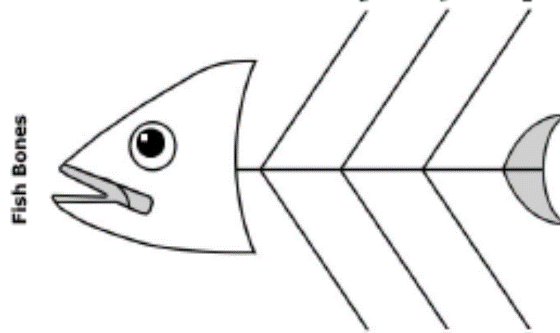
Short term plan
|
Unit:3 Values Unit of a long term plan unit1 |
School: S. Kozhanov |
||||||||||||||||||||
|
Date: |
Teacher name: Baigalieva Akmaral Kanibekovna |
||||||||||||||||||||
|
CLASS: 5 |
Number present: |
absent: |
|||||||||||||||||||
|
Lesson title: |
What we value 1 |
||||||||||||||||||||
|
Learning objectives(s) that this lesson is contributing to (link to the Subject programme) |
5.UE2 use quantifiers many , much , a lot of ,a few on a limited range of familiar general and curricular topics 5.R2 understand with little support specific information and detail in short, simple texts on a limited range of general and curricular topics 5.S5 keep interaction going in basic exchanges on a growing range of general and curricular topics |
||||||||||||||||||||
|
Lesson objectives |
All learners will be able to:
Most learners will be able to:
Some learners will be able to:
|
||||||||||||||||||||
|
Assessment criteria |
|
||||||||||||||||||||
|
Values links |
‘Mangilik Yel’ 3rd value: National unity, peace and harmony in our society |
||||||||||||||||||||
|
Cross-curricular links |
Self-knowledge |
||||||||||||||||||||
|
Previous learning |
Friendship 1 |
||||||||||||||||||||
|
Plan |
|||||||||||||||||||||
|
Planned timings |
Planned activities (replace the notes below with your planned activities) |
Resources |
|||||||||||||||||||
|
Start 3 min
5 min
3 min |
І. Greeting: Organization moment. Teacher greets learners and learners respond to greeting. ІІ. Dividing group. The students are divided into two groups according to the two words which they choose “kindness and honesty” cards. ІІІ. Checking home task. Method “Fishbone”. Write some of the ways good friends treat each other. “How to be a good friend”.
Group assessment with the descriptor
ІV. Brainstorming. Task 1. Method: “Neighborhood chat” What does the word “value” mean? Each learner communicates with his neighbor on a topic, exchanges and expresses his thoughts. Formative assessment. Teacher’s assessment in oral form. Teacher introduces lesson objectives. |
Blackboard
Cards
Fishbone diagram |
|||||||||||||||||||
|
Middle 5 min
8 min
10 min
3 min
|
V. Task 2. Method: “Keyboard” Differentiation by scaffolding. Pre-teach vocabulary: Teacher demonstrates the new words. New words are shown in the slide. The words are taken each time the slide is opened. But the learners keep in mind whole words and pronounce.
Formative assessment (excellent, satisfactory, be active, good, perfect etc.).
Task VІІ. Review Grammar. Teacher gives information about using “many, much, a lot of, a few”. Task 5. Method: “Teaching dialogue”. Differentiation by group ability. More able learners make a dialogue without support and help to less able learners by complete the dialogue using “many, much, a lot of, a few”.
Asel: Do you need anything else? Zauresh: Let’s have a look. There are a lot of apples, but there aren’t any plums. Asel” Is there any apple juice left? Zauresh” There’s a little, but there isn’t much, so we need some more. Asel: And vegetables? Have we got any vegetables? Zauresh: Well I can see a few potatoes, but there aren’t many carrots. Asel: Oh, and we need a lot of crisps. My little sister is coming tomorrow. Zauresh: I think that’s everything. Let’s go!
Self-assessment When learners finish writing teacher shows answers on the board. And they check their own answers. Pre-reading task. Answer the questions about life’s value.
While-reading task. Method: “Think, share, integrate”. Read the text and translate. The value of a life. A man went to Guru Nanak Sahib and asked, “What’s the value of life?” Guru Nanak gave him one stone and said, “Find out the value of this stone, but don’t sell it”. The man took the stone to an Orange seller and asked him what its cost would be. He saw the shiny stone and said, “You can take 12 oranges and give me it”. The man apologized and said that the guru had asked him not to sell it. He went ahead and found a vegetable seller”. “What could be the value of this stone?” he asked the vegetable seller. The seller saw the shiny stone and said “Take one sack of potatoes and give me the stone”. The man apologized again and said he can’t sell it. He went into a jeweler shop and asked the value of the stone. The jeweler saw and said “I will give 50 lakhs for this stone”. The man explained that he can’t sell the stone. The man returned to the guru and told him what had happened. Now tell me what is the value of life? Guru Nanak said: You may be precious stone, even priceless, but people will value you based on their financial status, their belief in you and their risk taking ability. But don’t fear, you will surely find someone who will discern your true value. Respect yourself. You are unique. No one can replace you! Post-reading task Task 4. Method: “Two truth and a lie”. Differentiation by type of task More able learners write 3 statements about text, two of which should be lies and one which should be true. Model
Speaking Less able learners answer the question with teacher’s support by eliciting techniques
Task 3 Method: “Pyramid” Write the sentences in order of values up and down in the meanings
AFL: Teacher’s assessment in oral form.
|
Interactive board, slide
Interactive board, slide
Descriptor sheet
Make a “Pyramid” Poster. Colour pencils
|
|||||||||||||||||||
|
End 3 min |
Feedback. Method: “Mosaic”.
Teacher gives cards to learners. They write their opinion about new theme. “Spiritual revival” is drawn from the card. For feedback I use chart for mutual evaluation. VІІІ. Home task. Make a dialogue. Learn by heart new words The lesson is over! Good-bye!!! |
“Spiritual revival” |
|||||||||||||||||||
|
Additional information
|
|||||||||||||||||||||
|
Differentiation – how do you plan to give more support? How do you plan to challenge the more able learners? |
Assessment – how are you planning to check learners’ learning? |
Health and safety check |
|||||||||||||||||||
|
Differentiation by scaffolding. Pre-teach vocabulary. Differentiation by group ability. More able learners make a dialogue without support and help to less able learners by complete the dialogue using “many, much, a lot of, a few”. Differentiation by type of task More able learners write 3 statements about text, two of which should be lies and one which should be true. Less able learners answer the question with teacher’s support by eliciting techniques
|
The teacher will use various formative assessment strategies by encouraging them with the phrases like “Well done, be active, good for you!” Feedback. Method: “Mosaic”.
Teacher gives cards to learners. They write their opinion about new theme “Spiritual revival” is drawn from the card.
|
Health saving technologies. Using physical exercises and active activities. Rules from the Safety Rules book which can be applied in this lesson. |
|||||||||||||||||||
|
Reflection
Were the lesson objectives/learning objectives realistic? Did all the learners achieve the lesson objectives/ learning objectives? If not, why? Did my planned differentiation work well? Did I stick to timings? What changes did I make from my plan and why?
|
Use the space below to reflect on your lesson. Answer the most relevant questions from the box on the left about your lesson. |
||||||||||||||||||||
|
|
|||||||||||||||||||||
|
Summary evaluation
What two things went really well (consider both teaching and learning)?
1:
2:
What two things would have improved the lesson (consider both teaching and learning)?
1:
2:
What have I learned from this lesson about the class or individuals that will inform my next lesson?
|
|||||||||||||||||||||
жүктеу мүмкіндігіне ие боласыз
Бұл материал сайт қолданушысы жариялаған. Материалдың ішінде жазылған барлық ақпаратқа жауапкершілікті жариялаған қолданушы жауап береді. Ұстаз тілегі тек ақпаратты таратуға қолдау көрсетеді. Егер материал сіздің авторлық құқығыңызды бұзған болса немесе басқа да себептермен сайттан өшіру керек деп ойласаңыз осында жазыңыз
Ашық сабақ"What we value 1" 5сынып
Ашық сабақ"What we value 1" 5сынып
Short term plan
|
Unit:3 Values Unit of a long term plan unit1 |
School: S. Kozhanov |
||||||||||||||||||||
|
Date: |
Teacher name: Baigalieva Akmaral Kanibekovna |
||||||||||||||||||||
|
CLASS: 5 |
Number present: |
absent: |
|||||||||||||||||||
|
Lesson title: |
What we value 1 |
||||||||||||||||||||
|
Learning objectives(s) that this lesson is contributing to (link to the Subject programme) |
5.UE2 use quantifiers many , much , a lot of ,a few on a limited range of familiar general and curricular topics 5.R2 understand with little support specific information and detail in short, simple texts on a limited range of general and curricular topics 5.S5 keep interaction going in basic exchanges on a growing range of general and curricular topics |
||||||||||||||||||||
|
Lesson objectives |
All learners will be able to:
Most learners will be able to:
Some learners will be able to:
|
||||||||||||||||||||
|
Assessment criteria |
|
||||||||||||||||||||
|
Values links |
‘Mangilik Yel’ 3rd value: National unity, peace and harmony in our society |
||||||||||||||||||||
|
Cross-curricular links |
Self-knowledge |
||||||||||||||||||||
|
Previous learning |
Friendship 1 |
||||||||||||||||||||
|
Plan |
|||||||||||||||||||||
|
Planned timings |
Planned activities (replace the notes below with your planned activities) |
Resources |
|||||||||||||||||||
|
Start 3 min
5 min
3 min |
І. Greeting: Organization moment. Teacher greets learners and learners respond to greeting. ІІ. Dividing group. The students are divided into two groups according to the two words which they choose “kindness and honesty” cards. ІІІ. Checking home task. Method “Fishbone”. Write some of the ways good friends treat each other. “How to be a good friend”.
Group assessment with the descriptor
ІV. Brainstorming. Task 1. Method: “Neighborhood chat” What does the word “value” mean? Each learner communicates with his neighbor on a topic, exchanges and expresses his thoughts. Formative assessment. Teacher’s assessment in oral form. Teacher introduces lesson objectives. |
Blackboard
Cards
Fishbone diagram |
|||||||||||||||||||
|
Middle 5 min
8 min
10 min
3 min
|
V. Task 2. Method: “Keyboard” Differentiation by scaffolding. Pre-teach vocabulary: Teacher demonstrates the new words. New words are shown in the slide. The words are taken each time the slide is opened. But the learners keep in mind whole words and pronounce.
Formative assessment (excellent, satisfactory, be active, good, perfect etc.).
Task VІІ. Review Grammar. Teacher gives information about using “many, much, a lot of, a few”. Task 5. Method: “Teaching dialogue”. Differentiation by group ability. More able learners make a dialogue without support and help to less able learners by complete the dialogue using “many, much, a lot of, a few”.
Asel: Do you need anything else? Zauresh: Let’s have a look. There are a lot of apples, but there aren’t any plums. Asel” Is there any apple juice left? Zauresh” There’s a little, but there isn’t much, so we need some more. Asel: And vegetables? Have we got any vegetables? Zauresh: Well I can see a few potatoes, but there aren’t many carrots. Asel: Oh, and we need a lot of crisps. My little sister is coming tomorrow. Zauresh: I think that’s everything. Let’s go!
Self-assessment When learners finish writing teacher shows answers on the board. And they check their own answers. Pre-reading task. Answer the questions about life’s value.
While-reading task. Method: “Think, share, integrate”. Read the text and translate. The value of a life. A man went to Guru Nanak Sahib and asked, “What’s the value of life?” Guru Nanak gave him one stone and said, “Find out the value of this stone, but don’t sell it”. The man took the stone to an Orange seller and asked him what its cost would be. He saw the shiny stone and said, “You can take 12 oranges and give me it”. The man apologized and said that the guru had asked him not to sell it. He went ahead and found a vegetable seller”. “What could be the value of this stone?” he asked the vegetable seller. The seller saw the shiny stone and said “Take one sack of potatoes and give me the stone”. The man apologized again and said he can’t sell it. He went into a jeweler shop and asked the value of the stone. The jeweler saw and said “I will give 50 lakhs for this stone”. The man explained that he can’t sell the stone. The man returned to the guru and told him what had happened. Now tell me what is the value of life? Guru Nanak said: You may be precious stone, even priceless, but people will value you based on their financial status, their belief in you and their risk taking ability. But don’t fear, you will surely find someone who will discern your true value. Respect yourself. You are unique. No one can replace you! Post-reading task Task 4. Method: “Two truth and a lie”. Differentiation by type of task More able learners write 3 statements about text, two of which should be lies and one which should be true. Model
Speaking Less able learners answer the question with teacher’s support by eliciting techniques
Task 3 Method: “Pyramid” Write the sentences in order of values up and down in the meanings
AFL: Teacher’s assessment in oral form.
|
Interactive board, slide
Interactive board, slide
Descriptor sheet
Make a “Pyramid” Poster. Colour pencils
|
|||||||||||||||||||
|
End 3 min |
Feedback. Method: “Mosaic”.
Teacher gives cards to learners. They write their opinion about new theme. “Spiritual revival” is drawn from the card. For feedback I use chart for mutual evaluation. VІІІ. Home task. Make a dialogue. Learn by heart new words The lesson is over! Good-bye!!! |
“Spiritual revival” |
|||||||||||||||||||
|
Additional information
|
|||||||||||||||||||||
|
Differentiation – how do you plan to give more support? How do you plan to challenge the more able learners? |
Assessment – how are you planning to check learners’ learning? |
Health and safety check |
|||||||||||||||||||
|
Differentiation by scaffolding. Pre-teach vocabulary. Differentiation by group ability. More able learners make a dialogue without support and help to less able learners by complete the dialogue using “many, much, a lot of, a few”. Differentiation by type of task More able learners write 3 statements about text, two of which should be lies and one which should be true. Less able learners answer the question with teacher’s support by eliciting techniques
|
The teacher will use various formative assessment strategies by encouraging them with the phrases like “Well done, be active, good for you!” Feedback. Method: “Mosaic”.
Teacher gives cards to learners. They write their opinion about new theme “Spiritual revival” is drawn from the card.
|
Health saving technologies. Using physical exercises and active activities. Rules from the Safety Rules book which can be applied in this lesson. |
|||||||||||||||||||
|
Reflection
Were the lesson objectives/learning objectives realistic? Did all the learners achieve the lesson objectives/ learning objectives? If not, why? Did my planned differentiation work well? Did I stick to timings? What changes did I make from my plan and why?
|
Use the space below to reflect on your lesson. Answer the most relevant questions from the box on the left about your lesson. |
||||||||||||||||||||
|
|
|||||||||||||||||||||
|
Summary evaluation
What two things went really well (consider both teaching and learning)?
1:
2:
What two things would have improved the lesson (consider both teaching and learning)?
1:
2:
What have I learned from this lesson about the class or individuals that will inform my next lesson?
|
|||||||||||||||||||||

шағым қалдыра аласыз



















